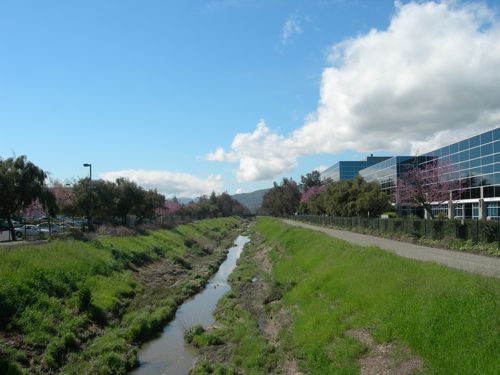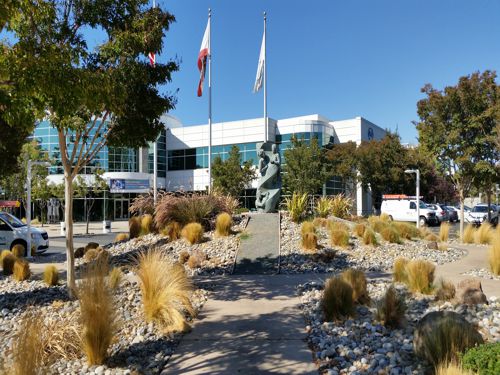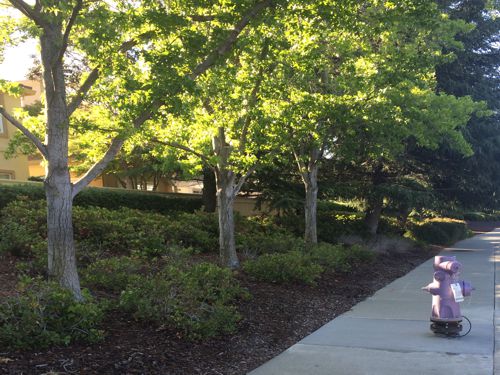Water
Water



Community concerns have historically focused on the need to make sure that local development is sensitive to the need to protect the area's water resources. The innovation and quality design principles at Hacienda have enabled it to respond quickly, and effectively, to rapidly evolving expectations about how to use water, a vital resource.
Water Innovations
The development is leading the way in water conservation by utilizing a recycled water delivery system to irrigate landscaping. The infrastructure for this system was part of Hacienda's design from the beginning. As soon as the City of Pleasanton developed a recycled water program, Hacienda began using recycled water for its landscaping. Currently, Hacienda improvements have been made to deliver recycled water to approximately two-thirds of the development's landscaping. As additional recycled water supplies grow, so will Hacienda's use of recycled water.
Hacienda has also reduced its water use with drought-tolerant landscaping and updated park standards. New projects are required to plant drought-tolerant landscaping that requires less water and fewer chemicals. To educate existing tenants about the benefits of the new standards, Hacienda promotes the fact that drought-tolerant plants are good for both the environment and the bottom line. Over time, Hacienda has also greatly reduced the amount of water used in the development through upgrades that ensure water is delivered in the minimum required amount at the appropriate times.
Watching the Water
As part of the initial development approvals, Hacienda was required to monitor a number of environmental parameters, including water quality. A monitoring program was established to provide baseline data for the development. Water quality parameters measured included water-depth levels, flow, and quality. The monitoring program was modified in 1990 to reflect new standards and procedures recommended by an outside consultant, who determined that true groundwater aquifers should be monitored rather than the shallow groundwater aquitard. Monitoring was also changed to a yearly exercise. The data generated established the status of groundwater conditions which were, in turn, measured against federal, state, and local requirements.
In 1997, routine water and air monitoring activities were concluded after satisfactory evidence was presented to the City of Pleasanton that full-time monitoring was not required. Future water monitoring activities will be implemented on a project-specific basis as needed. Given the absence of heavy industry in Hacienda, no new requirements have emerged since the routine program was discontinued.




